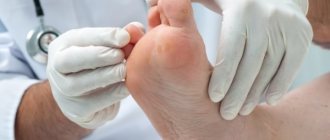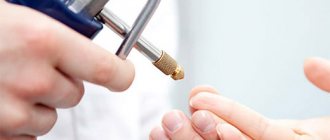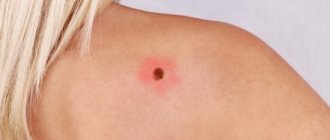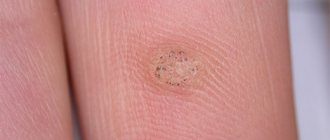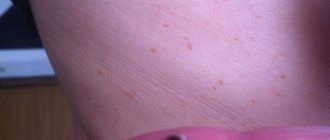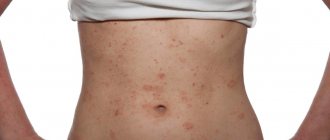What is it and what types are there?
How to identify a wart? It is a formation on the skin that appears under the influence of papilloma viruses .
Their size can reach several centimeters in diameter, but the most common options are growths up to 15 mm.
Warts can merge with each other, forming a large tumor. Their initial color does not differ from the natural shade of the skin, but over time they become brown or black.
Main types of warts:
- ordinary (most often they appear on the hands or face, children are especially susceptible to their appearance, visually the formation does not differ in color from the skin, the size reaches a match head, such warts appear singly extremely rarely);
- flat (warts appear in children and adults on the hands and fingers, under the armpits, neck or face, have a flat shape, do not differ in color from the skin, but may have a yellowish tint);
- plantar (visually resemble a callus, appear mainly on the feet and legs, shapes and sizes may vary);
- senile (typical for elderly people, visually they look like a small brown spot, but over time their size can reach 5 cm in diameter, they form mainly on closed parts of the body, which causes significant discomfort);
- pointed (the second name is condylomas, they have an elongated shape, can bleed, appear mainly on the genitals of women and men).
Other viral warts are also isolated:
- threadlike;
- chicken
Inflammation of the wound after wart removal
Prolonged exposure to the sun can be one of the causes of inflammation
Recovery of the skin after wart removal can take from several days to several months. This depends on the method of removing the growth, as well as its size. If the wart covers a large area of skin, healing occurs much more slowly.
To prevent the wound from becoming inflamed after wart removal, it is necessary to follow the rules of postoperative care. A wound can become inflamed for the following reasons:
- Prolonged exposure to direct sunlight, as well as tanning in a solarium. After removing the wart, it is necessary to cover the affected area of the skin so that the sun's rays do not fall on it.
- Mechanical damage. Scratching, scratching and rubbing can lead to serious inflammation of the wound.
- Wetting the wound.
- Self-removal of the crust from the wound during the healing process.
- Failure to comply with personal hygiene rules.
After removing a wart, you must carefully monitor the condition of the wound until it heals completely. The wound should be periodically treated with an antiseptic to avoid infection.
Do not apply greasy creams or Vaseline to the wound. The damaged area must be clean and dry and completely protected from mechanical injury.
If inflammation of the wound does occur, only a doctor can select the necessary treatment. The specialist will prescribe the necessary medications, as well as a regimen for their use.
Causes and symptoms
The main cause of warts is the papilloma virus . Almost every person is infected with it, but it does not always manifest itself in the form of formations on the skin.
The presence of the virus may not be accompanied by severe symptoms. If a person has additional factors that contribute to the development of infection, then numerous signs appear, including warts.
The reasons for the appearance of warts on the fingers and toes include the following factors:
- contact with an infected person (personal or sexual);
- use of shared hygiene items or utensils;
- visiting public places (baths, saunas, swimming pools, etc.) where an infected person was;
- weakened state of the body (under the influence of stress, weak immunity, lack of sleep, etc.);
- disruption of the internal systems of the body under the influence of poor nutrition or bad habits.
Can I remove it myself at home?
It often happens that people ignore visiting doctors and try to get rid of the problem on their own. Many of them are starting to use celandine. It is worth clarifying here that this plant is quite dangerous for the skin, because if you overdo it with its juice, you can get a serious burn. After using celandine, the wart may begin to hurt or fester.
For local treatment it is customary to use acids. The most popular drugs are salicylic, lactic, nitric, carbolic and cantharidic acids.
To summarize, we can safely say that you cannot self-medicate. If a person notices any changes in skin growths, he should immediately contact his physician or a dermatologist at the clinic. Before visiting a doctor, the wart must not be picked off, rubbed, or treated with anything. If the growth has been injured, it is recommended to lubricate it with hydrogen peroxide.
It must be remembered that only a qualified specialist can determine why changes in warts occur and prescribe appropriate and correct treatment for the problem.
In the case when the growth has already been removed in the hospital, it is recommended to strictly follow all medical instructions. If this is not done, the formation may appear again or a large, unaesthetic scar will remain in its place.
Stages of growth
Warts grow in several stages. At the initial stages of their development, they are practically invisible and can disappear on their own without treatment. The growth process of the formation and visual changes in the skin directly depend on the type of wart.
Stages of education growth depending on the type:
- the ordinary type is formed in the form of a small growth on the skin, gradually the color of the wart changes (becomes yellowish or pink), its size increases, and the surface becomes rough;
- the plantar type at the initial stage manifests itself in the form of a formation on the heel, upon examination, thread-like adhesions surrounded by a keratinized layer of skin are clearly visible, pain gradually appears, and the growth increases in size;
- the flat type begins its development with the formation of papules on the skin, slightly rising above the skin, gradually they begin to grow together and change their color (such warts can be pinkish, gray or have a yellow tint);
- the senile type appears as a small brown dot, the spot gradually increases in size and begins to rise above the skin, the growth of the formation occurs constantly and it turns into a round plaque (the size reaches several centimeters);
- the pointed type visually resembles a small papule, with further development its size increases, and the hue becomes pinkish, the shape takes on the outline of a “papilla”, at later stages such formations grow together (visually resemble a rooster’s comb) and bleed.
Genital warts
Flat warts
Plantar warts
Common warts
Senile warts
How a wart begins to grow in the first stage
Infection with the human papillomavirus causes the growth of warts. Among them are the following types:
- vulgar;
- plantar;
- flat;
- genital warts;
- papillomas;
- Senile keratomas are included in a separate group (not associated with HPV).
They have different locations on the surface of the skin and mucous membranes, but the growth mechanism is common.
The human papillomavirus infects only stratified squamous epithelial cells. It can remain in a latent state for a long time. After penetration into the cell, viral particles begin to multiply. As a result, the vital activity of infected cells changes, which is manifested by impaired differentiation and division. In the basal layer, the cells of which are initially affected by HPV, undergo accelerated division. This leads to deformation of the inner layers of the epidermis and a general thickening of the skin. Further transformation of cells leads to greater proliferation and formation of formations.
A senile wart (keratoma) begins to grow due to the active division of keratinocyte cells - the surface layer of the epidermis. But the pathogenesis is unclear.
What to do? In what cases should you consult a doctor?
Warts are considered benign formations , but they cannot be called safe for the body. In some cases, their development trends lead to changes in characteristics.
Malignant warts can cause cancer, which is not only life-threatening, but also fatal. In addition, when they appear on some parts of the body, the formations cause discomfort and can lead to injury, so it is better to treat warts with folk remedies and pharmaceuticals or in a clinic in a timely manner.
Features of treatment depending on the variety:
Senile warts do not require treatment, but if necessary, they can be removed with special procedures (for example, for a cosmetic effect). Plantar varieties must be treated as early as possible, otherwise severe pain will occur, making movement difficult.
Removal in progress:
- surgical method);
- laser;
- nitrogen;
- radio waves.
Common and genital warts are easier to treat. If an ordinary wart grows, specialists use special solutions, tablets and injections, and the formations disappear within a short period of time.
Regardless of the location and size of the growth, it is necessary to have it examined by a specialist who treats warts as soon as possible.
Self-medication in this case is contraindicated. If you remove the formation yourself, this can lead to extremely negative consequences (the appearance of a malignant tumor, blood poisoning, etc.).
Surgery is performed only as a radical measure if the wart grows uncontrollably, itches severely or bleeds. Timely treatment in a clinic can relieve many aesthetic problems and health hazards.
When a wart appears on the body, folk remedies are often used, such as:
- celandine;
- garlic;
- potato;
- vinegar;
- castor oil;
- thread.
If they do not help, then use effective pharmaceutical drugs against warts. Using:
- Cauterizing warts at home using iodine, hydrogen peroxide, Supercleaner.
- Freezing of growths using such means as Warner Cryo, Cryopharma.
- Special ointments for warts, such as Viferon.
- Medical pencils, such as lapis.
- Salipod patch and others.
Treatment of purulent growths
Warts that appear on the skin must be removed in order to avoid the development of purulent papillomas due to infection. For this, modern medicine offers physiotherapeutic procedures and medications. Among the physical procedures used, the following are effective:
- laser therapy , in which a laser beam is used to remove tumors;
- cryodestruction or freezing of the wart using liquid nitrogen. After exposure of the papilloma to cold, tissue necrosis and death of the neoplasm occurs;
- electrocoagulation or cauterization of papilloma. Electric current is used for this procedure. In this case, the connections between the blood vessels and nerves of the wart and the skin are interrupted;
- radio wave treatment, which is carried out with a radio wave knife emitting high-frequency radio waves.
Using the above procedures, purulent warts can also be removed. Although these methods are effective, they are quite expensive compared to medications, which can also solve the problem.
Treatment with medications
Among the medications used to remove papillomas, the most commonly used are:
- "Super celandine." This drug contains an alkali, which helps to corrode the wart. It works quite quickly, 2 times of use is enough to see the result.
- Effective drugs are also Verrukacid, Solcoderm, Ferozol, Collomak, oxalic and salicylic ointment, Panavir gel, Cryopharma, a cream that freezes warty growths.
